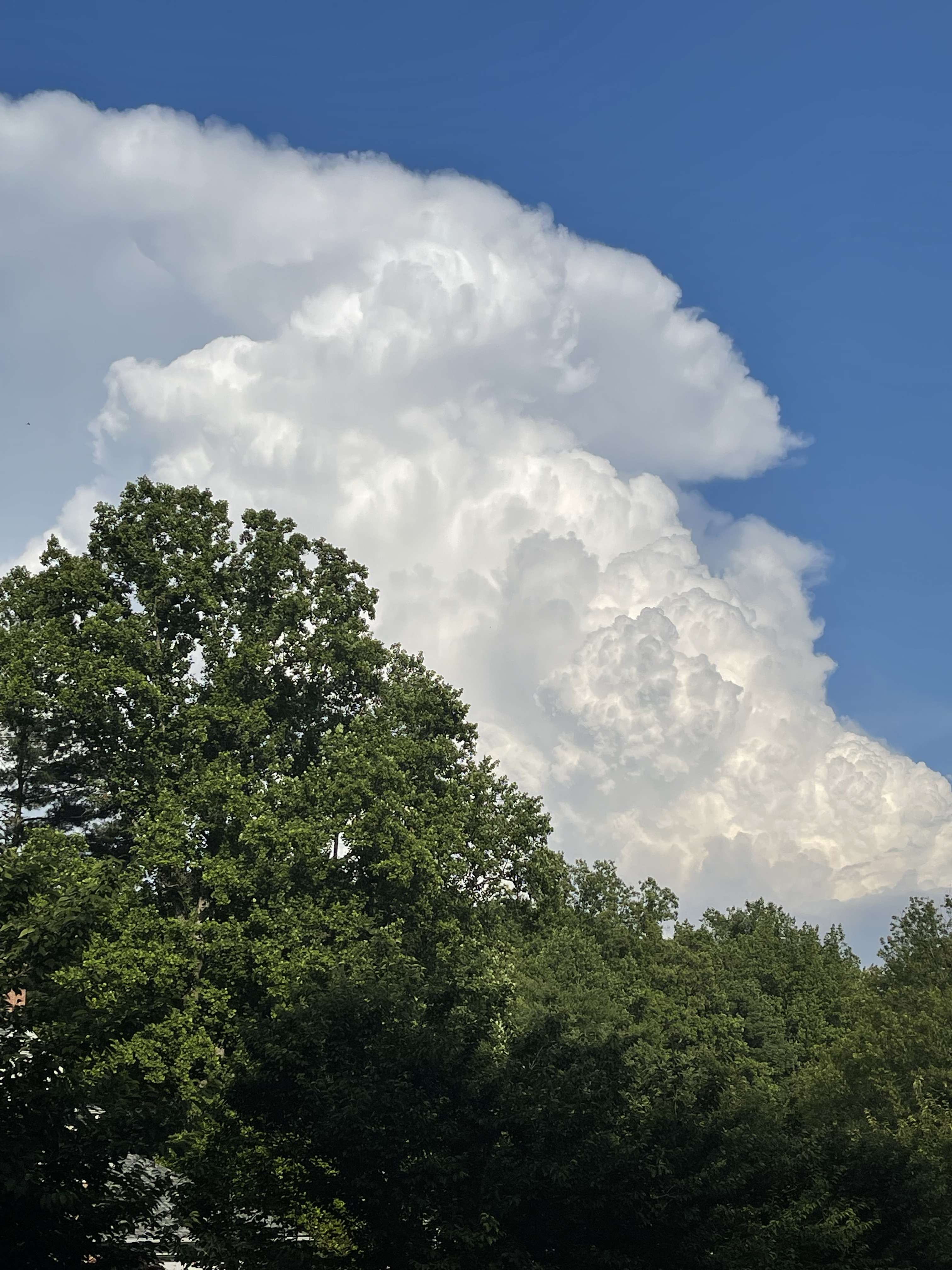-
Posts
44657 -
Joined
-
Last visited
-
Days Won
262
Posts posted by Phil
-
-
Worked over = reduced instability
-
Some of the datacenters I work with are on high alert for the coming week due to the storms. I think they take their cues from what is on weather.com.
It was storming for 9-10hrs straight in these parts last night, so there's a question of whether or not the atmosphere has been somewhat worked-over, as last night's disturbance was weaker and actually sourced via the SW Monsoon..
Right now...theta-e pooling is impressive w/ very nice 500mb-700mb T differential...could be a big day should everything come together..
Tornado Watch issued.
-
it looks like a repeat in the making with a -epo +pna -ao -qbo +nao and others is going to contribute to this winter to be like last winter and with a southeast ridge setting up so that means the midwest is going to cash in with bowling ball col lows and panhandle hooks and with the el nino being morphed into a modoki el nino.
I don't understand why you're predicting a -AO and +NAO? That's very difficult to do and even last winter it was not usually the case..has never happened for extended periods in a -QBO, at least since we began adequate record-keeping..
With a Niño/+AAM bias in the tropical forcing, getting a SE ridge would be especially difficult as low heights/enhanced vorticity would be favored over the Aleutians/NPAC, which favors increased upward propagating Rossby waves, hence a weakened/elongated PV more prone to intrusion/SSW activity..
-
If we end up with a +NAO/+AAM, most of the country will probably torch.
We currently have a developing -QBO which when coupled with what will likely be a +AAM winter w/ average solar and a strong Brewer-Dobson circulation, I suspect will lead to an Aleutian low, active STJ, amplified MJO, and possibly a very perturbed PV over the long run.
So I's anticipate a +PNA/-AO winter.
-
 1
1
-
-
Wow, SPC is bullish for a legit severe outbreak tomorrow:
http://www.americanwx.com/bb/uploads/monthly_07_2014/post-397-0-17905100-1406355314.gif
-
We need the Sun to be quiet w/ the -QBO/MQI to achieve ideal blocking this winter. Not as necessary in a +QBO because an NPAC/EPO ridging is naturally favored in that case..
-
The SE ridge is something I mentioned back in June. SST anomalies look favorable at the moment for pronounced ridging near Bermuda.
I heard from JB that he is using '77/78 as one of the analogs and that was a Blockbuster year for our region that had monster snowstorms. If we can get another 80"+ season, I'd be that happiest guy on the block!
There wasn't a pronounced SE ridge in '77/78. As for 2014-15, I doubt a sustained SE ridge will be possible under the favored ENSO/QBO regime. I'm leaning towards a stronger subtropical jet and Aleutian troughing.
That said, we won't know for sure until October/November, when things settle in a bit...just my take
-
So then what are you objecting to?
-
The 2009-10 analog is similar in other ways..primarily in the stratosphere. The -QBO, SAO, Brewer-Dobson cells, and MQI in general are similar.
That said, if ENSO weren't enough, solar alone may prevent a repeat of 2009-10, both in tropical response and the magnitude of the -NAM.
-
 1
1
-
-
The deep oceans receive essentially no radiative energy..it's pitch black at the sea floor. The only sources of energy are from warmer sources...the very minute geothermal heat flux, and diffusion/conduction from the warmer waters above..
-
If "cold sinks", as you say, then why does air temperature decrease with height in the troposphere? The coldest temperatures are found way up at the mesopause, in fact. In a gravitational field, things work differently.
Your proposition doesn't explain why the deep oceans are still cooling after having billions of years to reach equilibrium...the "cold water sinks" argument makes no sense, not only because the gravitational force leads to a semi-exponential density gradient with depth, but also because the only two heat sources to the deep oceans are the geothermal flux at the ocean floor of about 0.8W/m^2, and the mixing/diffusion process within the water itself...
-
The better question perhaps being, .. Will it, any time soon. ?
Yes, it will. Equilibrium has been achieved in the atmosphere, but not the deep oceans..yet. That should occur shortly, in my opinion.
-
By "deep oceans", I was referring to the 700-2000m layer. This is delving much deeper, into the "abyssal" ocean, so-to-speak.
-
I'm not surprised by this at all, given the positive radiation imbalance that has been measured via satellite since 2009..
http://ocean.mit.edu/~cwunsch/papersonline/heatcontentchange_26dec2013_ph.pdf

-
I'm not surprised by this at all, given the positive radiation imbalance that has been measured via satellite since 2009..
http://ocean.mit.edu/~cwunsch/papersonline/heatcontentchange_26dec2013_ph.pdf
Two of the world’s premiere ocean scientists from Harvard and MIT have addressed the data limitations that currently prevent the oceanographic community from resolving the differences among various estimates of changing ocean heat content (in print but available here).3 They point out where future data is most needed so these ambiguities do not persist into the next several decades of change. As a by-product of that analysis they 1) determined the deepest oceans are cooling, 2) estimated a much slower rate of ocean warming, 3) highlighted where the greatest uncertainties existed due to the ever changing locations of heating and cooling, and 4) specified concerns with previous methods used to construct changes in ocean heat content, such as Balmaseda and Trenberth’s re-analysis (see below). 13 They concluded, “Direct determination of changes in oceanic heat content over the last 20 years are not in conflict with estimates of the radiative forcing, but the uncertainties remain too large to rationalize e.g., the apparent “pause” in warming.”
Their results (Figure 18. below) suggest a flattening or slight cooling in the upper 100 meters since 2004, in agreement with the -0.04 Watts/m2 cooling reported by Lyman (2014).6 The consensus of previous researchers has been that temperatures in the upper 300 meters have flattened or cooled since 2003,4 while Wunsch and Heimbach (2014) found the upper 700 meters still warmed up to 2009.

The deep layers contain twice as much heat as the upper 100 meters, and overall exhibit a clear cooling trend for the past 2 decades. Unlike the upper layers, which are dominated by the annual cycle of heating and cooling, they argue that deep ocean trends must be viewed as part of the ocean’s long term memory which is still responding to “meteorological forcing of decades to thousands of years ago”. If Balmaseda and Trenberth’s model of deep ocean warming was correct, any increase in ocean heat content must have occurred between 700 and 2000 meters, but the mechanisms that would warm that “middle layer” remains elusive.
-
-
He's just so gosh darn smart! He can't help talking this way. It's our fault that we can't keep up!!
Come on, man. You can find literature on this everywhere. You're more than smart enough to know this:
https://ams.confex.com/ams/25HURR/techprogram/paper_36913.htm
-
-
... Looked at all together, what tells you that this will happen. ?
Essentially, -QBO gives MJO more free-will and favors an amplified EUT wave train, -NAM, etc. Shift in ITCZ will do just the opposite. Will the emergence/downwelling of the -QBO wind flux allow MJO to force KW/WWB activity? Who knows..
ITCZ moves N/S with seasonal shifts in insolation, altering the hemisphere-hemisphere wave train...ITCZ/Hadley/Walker/MJO/CCKW network (tropical forcings) either govern or act as the middle man to seasonal/intraseasonal phenomenon in the climate system....example ENSO, Polar-Mid Latitude Circulation, annular modes, etc.
The QBO is a strong governor of MJO mean-period frequency and NAM response to solar.
-
Looks very spindly attm...Atlantic ENSO (AEM/Atlantic Equatorial Mode) is also heavily negative..may eventually promote stronger easterlies in the EPAC as lift is enhanced there due to the warmer SSTs/HC regime:
http://www.ospo.noaa.gov/data/sst/anomaly/2014/anomnight.7.14.2014.gif
-
Anyone want to predict where this El Niño goes when the ITCZ moves S & the -QBO begins dominating the lower stratosphere?
-
Really hoping for something powerful this go around..I'm flying home right now, so should hopefully make it in time
-
I knew what you meant Phil if that helps. My thinking is also unchanged...which was quite similar to yours if I remember right.
Thanks. Yes yours was very similar to mine. I might lower my guess a bit unless I'm barred from doing so. I'm not very good at predicting anomalies on such a specific scale..haha
-
I meant the "basis" (broad longitudinal location) of the warmest SST anomalies within the ENSO domain..a basin-wide event has no statistically significant basis..which is what I think this event will morph into.
-
SEA
87/64
91/66
89/63
92/65
94/65
95/66
PDX
94/65
96/65
96/65
99/66
103/68
103/67



Possibility of SW Summer Monsoon?
in West of the Rockies
Posted
Kind of interesting...your monsoon actually sparked a shortwave which made it all the way over here in the form of a big MCS.
Actually delivered several inches of rain w/ hours of prolific lightning